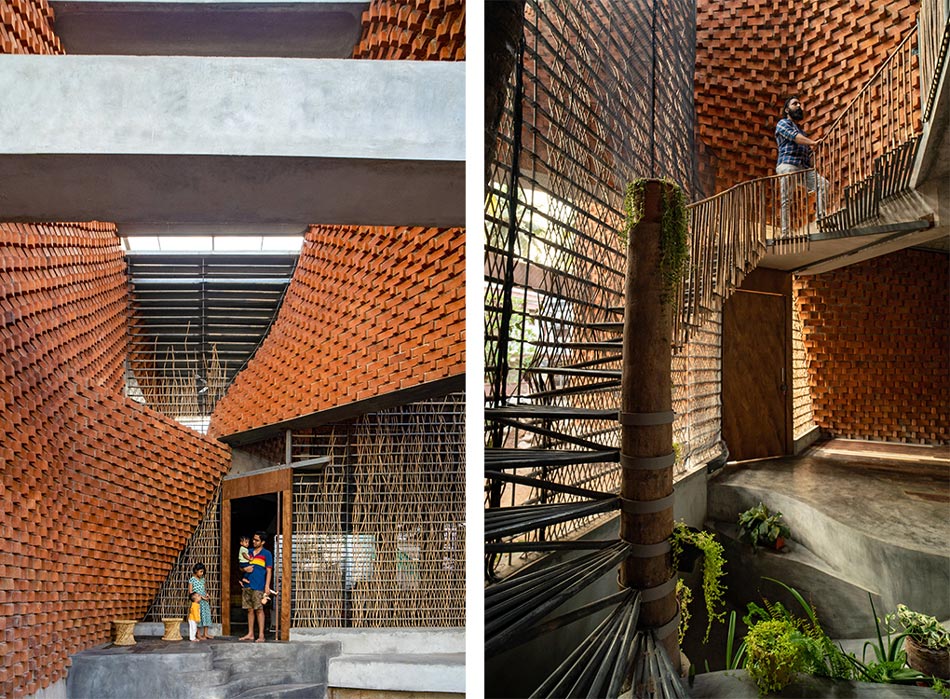Set in an urban landscape, Pirouette House was designed with all the spaces opening onto a central funneling courtyard. With an east-west orientation and the openings facilitating maximum cross ventilation, the idea was to provide the house with room to breathe since the site was otherwise suffocated by residential projects on all four sides.
Because the site is located in the crowded, urban locality of Trivandrum, a city that houses many of the architect Laurie Baker’s masterpieces, the use of rat trap bond masonry technique, one of his own introductions – with a little modification by Wallmakers – seemed apt. Also, a deliberate attempt was made to promote the use of kiln burnt bricks in Trivandrum, an industry on the brink of extinction, since the site did not provide great opportunities for making compressed earth blocks. Rat trap bond is a brick masonry method that not only decreases the overall number of bricks in use but also increases the thermal efficiency of the building, due to the cavity in the masonry pattern, and is ideal for concealing structural members and service ducts or conduits.
The highlight of the house is a series of sinusoidal slanting walls, gradually moving left and right only to converge at the top for the ferro-cement shells to rest on them. Each wall was specially crafted to create the feeling of larger volumes and a better sense of privacy within the space constraints affecting the site.
Leftovers from previous stages of construction were used to finish and add character to the space. From scaffolding pipes being transformed into the central staircase and the grills, or the reclaimed wooden planks becoming part of the living room flooring, the idea was to discard nothing as ‘waste’. The locally sourced and treated cane was used to add textured screening to the grillwork and furniture, providing vibrance and warmth to the spaces.
The Pirouette House thus features the ‘Last of the Mohicans’ fired bricks as an ode to the stellar practice of Laurie Baker with spaces deriving their beauty from pure geometry and simple patterns created by walls that seem to be dancing and pirouetting around.





















